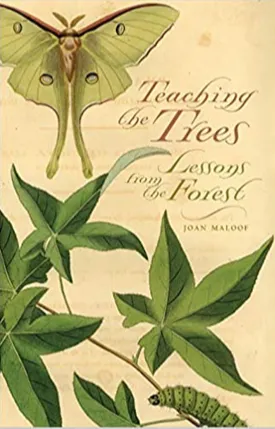Teaching the Trees: Lessons from the Forest by Joan Maloof
Teaching the Trees: Lessons from the Forest, by acclaimed naturalist Joan Maloof, is a captivating exploration of the forest for teachers, parents, and naturalists. This collection of essays reveals the secrets of nature and how we can learn from the trees and our surrounding environment. Although it’s written as a sort of professional biography, Maloof delivers in-depth knowledge about the ecology, wildlife, plants, and beauty of the forest - insights and insight that can be shared with others.
Maloof begins by introducing herself as a naturalist and certified teacher who’s taught biology and environmental science in Maryland. She explains her love for teaching and her motivation behind writing this collection of essays. Her journey through nature began 10 years earlier when she published her first book, Nature of the Eastern Forest. Now, in Teaching the Trees, she brings the forest’s secrets to life by sharing with readers her detailed observations, personal experiences, and research on trees and forests.
The essays are divided into five main chapters: Seeing Nature Everywhere, Teaching the Trees, Forest Benefits, Connections and Desecrations, and Leadership. In each of these, Maloof shares her knowledge about trees and forests with the reader through lessons for teaching, protecting and understanding our natural environment. Her words illustrate the grandeur, complexity and diversity of these forests, from the soil and fungi to the many species of plants, animals and birds.
In the first chapter, Seeing Nature Everywhere, Maloof shares her observations of the forest and reveals the importance of noticing the small things, such as plants and animals, that many people skip over. She encourages us to slow our pace and pay attention to even the smallest details, as they can provide remarkable insights into our natural environment.
In the second chapter, Teaching the Trees, Maloof focuses on the importance of teaching about nature in our communities. She explains that children can learn a great deal from these forests and how to be responsible citizens in a sustainable environment. She highlights various outdoor education programs and shares her experiences with teaching in public schools and universities.
In the third chapter, Forest Benefits, Maloof explores the many benefits forests provide and shares stories of their history and impact on the people who live there. She also examines our need to protect these forests and give them the respect they deserve.
In the fourth chapter, Connections & Desecrations, Maloof openly shares her stories of urban sprawl and development destroying the land she loves. She shares her grief and her desire to do something to help restore the forests and ecosystems.
In the fifth chapter, Leadership, Maloof reflects on her own life experiences as a leader and naturalist, as well as the people she has met on her journey. She explains the power of mentorship and inspires readers to become leaders in their own community.
Overall, this collection of beautifully written essays by Joan Maloof provides readers with a unique insight into the mysteries of the forest and how to protect it for future generations. Through vivid descriptions, detailed research, and real-life stories, Maloof explains how to connect with nature and shares her passion for teaching and preserving the natural world. Her words will be sure to leave readers with a greater understanding and appreciation for the forests that surround us.

